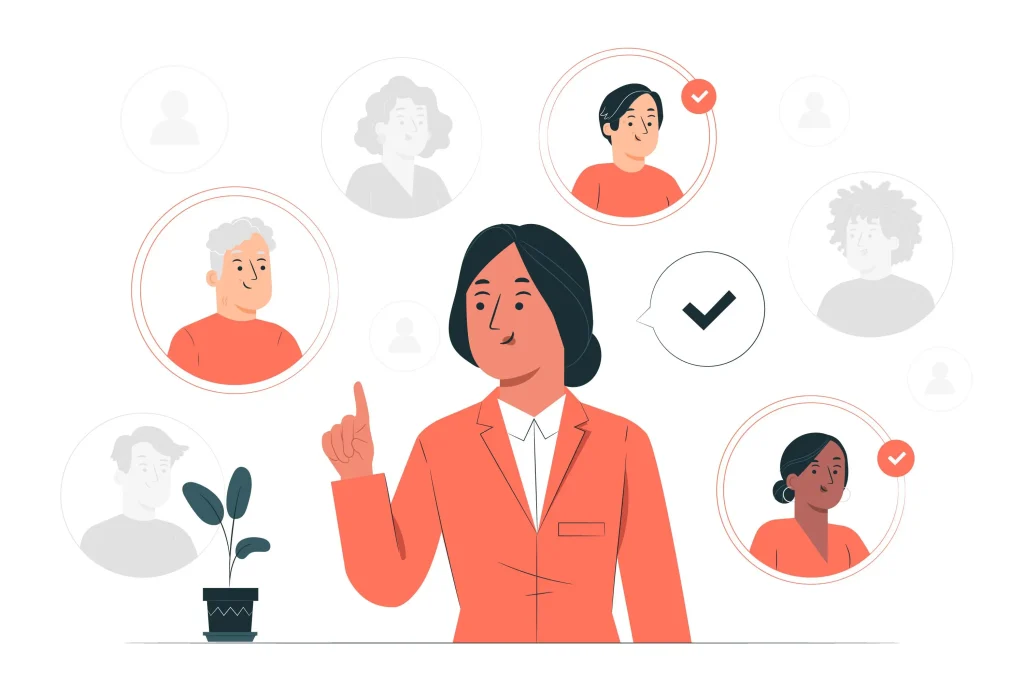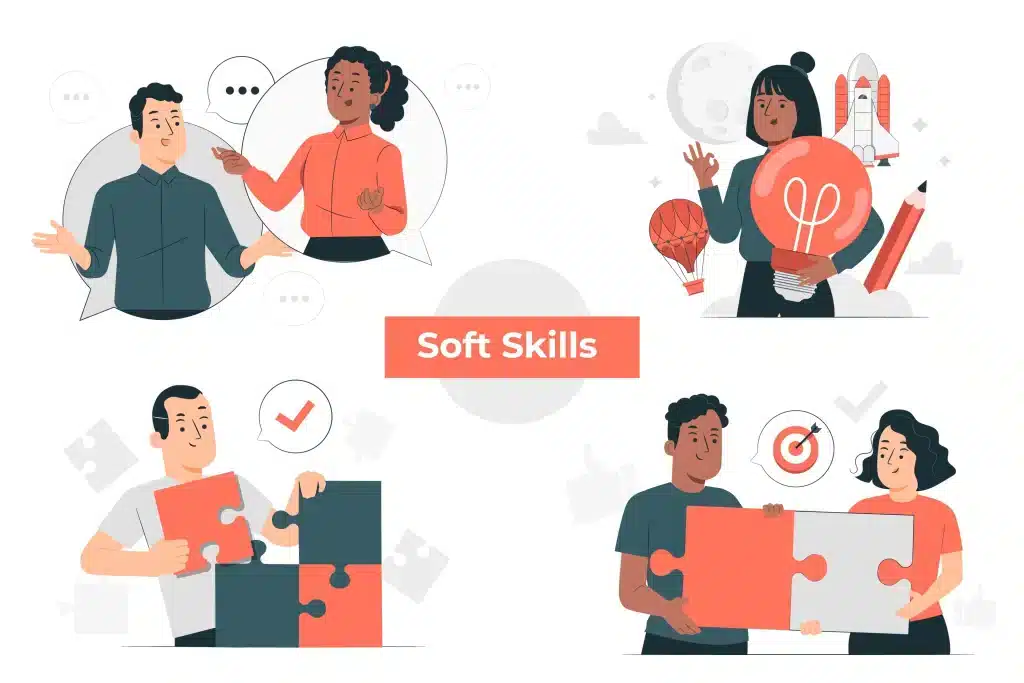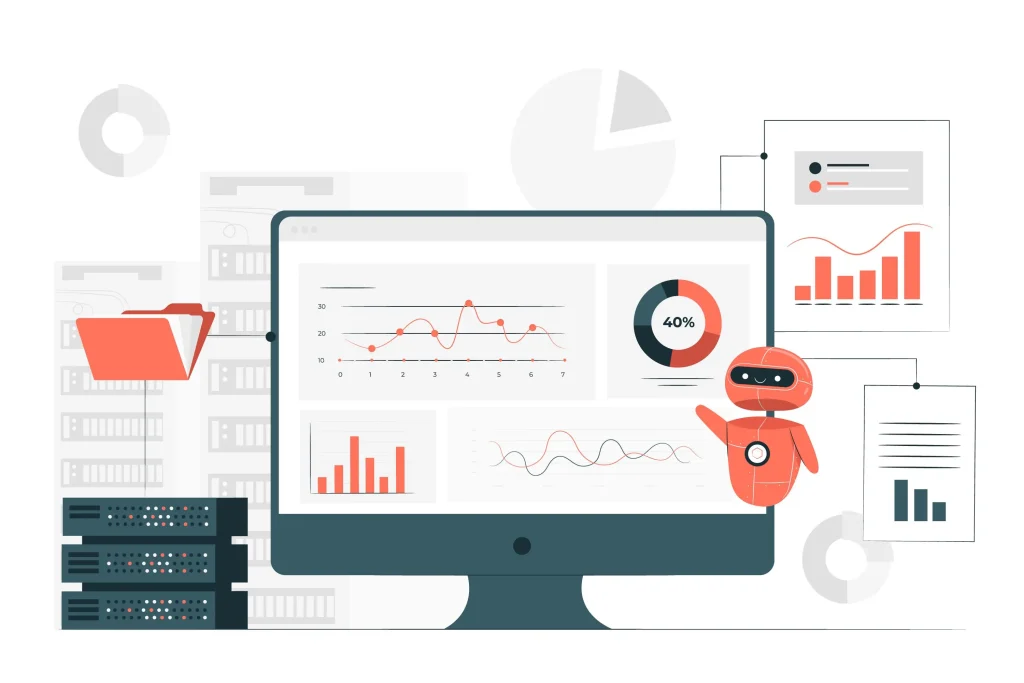
In the ever-evolving landscape of work, the dynamics of hiring are on the brink of a transformative shift. As we stand at the threshold of a new decade, the traditional recruitment paradigms are being redefined by technological advancements, societal shifts, and a reimagining of the very nature of work. The next ten years promise to be a journey into uncharted territory, where hiring practices will undergo unprecedented changes, ushering in an era of innovation, adaptability, and inclusivity. In this article, we delve into the multifaceted factors that will shape the future of hiring, offering a glimpse into how organizations and job seekers alike must navigate these emerging trends to thrive in the workforce of tomorrow.
Rise of Remote Work
The COVID-19 pandemic accelerated the adoption of remote work, which is expected to become a permanent feature of the employment landscape. Employers recognize the benefits of a geographically diverse workforce, and technology enables seamless collaboration across borders. Virtual hiring processes and a global talent pool will become the norm, reshaping the traditional concept of the workplace.
1. Acceleration due to COVID-19
The COVID-19 pandemic acted as a catalyst, accelerating the adoption of remote work globally. Lockdowns and social distancing measures forced organizations to implement remote work solutions to ensure business continuity quickly.
2. Technology Enablement
Advances in technology, especially in communication and collaboration tools, have made remote work more feasible. Video conferencing, cloud-based project management, and virtual collaboration platforms have become essential tools for remote teams.
3. Flexibility and Work-Life Balance
Remote work offers employees greater flexibility in managing their work schedules. This flexibility improves work-life balance, allowing individuals to tailor their work hours to their personal needs, which can enhance job satisfaction and overall well-being.
4. Global Talent Pool
Remote work breaks down geographical barriers, allowing organizations to tap into a global talent pool. Companies can hire the best talent regardless of location, leading to a more diverse and inclusive workforce.
5. Cost Savings
For both employers and employees, remote work can result in cost savings. Companies can reduce expenses related to office space, utilities, and other overhead costs. Meanwhile, employees can save on commuting costs and potentially relocate to more affordable areas.
6. Focus on Output and Results
Remote work often shifts the focus from traditional time-based metrics to output and results. Employers increasingly measure success by achieving goals and the quality of work rather than the number of hours spent in an office.
7. Challenges and Solutions
While remote work offers numerous benefits, it also presents challenges such as maintaining team cohesion, combating feelings of isolation, and ensuring effective communication. Employers are investing in technologies and strategies to address these challenges, including virtual team-building activities and enhanced communication protocols.
8. Hybrid Work Models
Many organizations are adopting hybrid work models, allowing employees to split their time between working remotely and in the office. This approach combines the advantages of remote work with the benefits of in-person collaboration.
9. Evolution of Leadership and Management Practices
Managing remote teams requires a shift in leadership and management practices. Leaders focus more on outcomes, building trust within teams, adopting inclusive leadership styles, and prioritizing effective communication and collaboration across digital platforms.
10. Impact on Commercial Real Estate
The rise of remote work has implications for the demand for commercial office space. Some companies are downsizing physical office footprints or adopting flexible arrangements to accommodate a more distributed workforce.
The rise of remote work is a multifaceted trend driven by technological advancements, societal shifts, and the recognition of its benefits to employers and employees. As organizations continue to adapt, the future of work will likely be characterized by a more flexible and dynamic approach to where and how work is conducted.

Emphasis on Soft Skills
While technical skills will continue to be crucial, employers are increasingly emphasizing soft skills such as adaptability, communication, and critical thinking. The ability to navigate complex and ambiguous situations will be highly valued as automation takes over routine tasks, making interpersonal skills essential for success in the evolving job market.
1. Adaptability and Flexibility
In a rapidly changing work environment, adapting to new situations and challenges is crucial. Employees with strong adaptability and flexibility skills can navigate uncertainty, learn quickly, and adjust their approaches to meet evolving business needs.
2. Communication Skills
Effective communication remains a cornerstone of successful collaboration. Individuals who can convey ideas clearly, actively listen, and articulate thoughts in a team setting are highly sought. This includes written communication in the form of emails and reports and verbal communication during meetings and presentations.
3. Collaboration and Teamwork
The future of work is increasingly collaborative, with projects often requiring input from diverse teams. Soft skills related to collaboration and teamwork, such as working well with others, sharing ideas, and resolving conflicts, will be essential for building high-performing teams.
4. Critical Thinking and Problem-Solving
As automation takes over routine tasks, employees will be valued for their critical thinking and problem-solving abilities. Soft skills in this category involve the capacity to analyze information, think creatively, and make informed decisions, contributing to innovation and efficient problem resolution.
5. Creativity and Innovation
Employers are recognizing the importance of fostering a culture of creativity and innovation. Soft skills associated with thinking outside the box, generating novel ideas, and approaching challenges with a fresh perspective will be highly prized in industries seeking to stay ahead of the curve.
6. Emotional Intelligence
Emotional intelligence involves understanding and managing one’s emotions and those of others. Employees with high emotional intelligence are adept at navigating social dynamics, building solid relationships, and responding appropriately to various workplace situations.
7. Leadership Skills
Leadership is not limited to managerial roles; it extends to anyone who can influence and inspire others. Soft skills related to leadership include the ability to motivate, mentor, and guide team members, as well as taking initiative and being accountable for one’s actions.
8. Cultural Competence
In an increasingly globalized world, cultural competence is vital. Soft skills in this area include understanding and appreciating diverse perspectives, effective cross-cultural communication, and working harmoniously in multicultural environments.
9. Time Management and Organization
Soft skills in time management and organization contribute to individual and team efficiency. Employees who prioritize tasks, set realistic goals, and manage their time effectively contribute to a more productive and streamlined work environment.
10. Networking and Relationship Building
Building professional networks and relationships is essential for career growth and organizational success. Soft networking skills involve connecting with others, establishing rapport, and cultivating positive relationships within and outside the organization.
The emphasis on soft skills reflects the recognition that success in the future workplace goes beyond technical competencies. As automation and artificial intelligence reshape job roles, the ability to demonstrate strong, soft skills will be a key differentiator for individuals and a crucial factor in building resilient, collaborative, and high-performing teams.

Artificial Intelligence in Recruitment
Integrating artificial intelligence (AI) in recruitment processes will become more sophisticated. AI algorithms will analyze resumes, assess candidate compatibility, and conduct initial interviews. This streamlining of the hiring process aims to save time, reduce bias, and enhance the overall efficiency of talent acquisition.
1. Resume Screening and Parsing
AI algorithms automate the initial screening of resumes. These systems can quickly analyze and parse through large volumes of resumes, identifying key qualifications and experiences that match job requirements. This saves time and helps reduce human bias in the early stages of candidate selection.
2. Chatbots for Initial Interactions
Chatbots powered by AI are increasingly being used for initial interactions with candidates. These bots can engage with applicants, answer frequently asked questions, and collect basic information. They provide a seamless and efficient way to pre-screen candidates before they interact with human recruiters.
3. Predictive Analytics for Candidate Assessment
Based on historical data and performance metrics, AI-driven predictive analytics assess the likelihood of a candidate’s success. This helps recruiters make more informed decisions about which candidates will likely be the best fit for a particular role.
4. Video Interview Analysis
AI is employed in analyzing video interviews to evaluate candidates beyond what is evident on their resumes. Facial expressions, tone of voice, and language patterns can be assessed to gain insights into a candidate’s communication skills, personality traits, and cultural fit.
5. Automated Scheduling
AI-driven tools facilitate automated interview scheduling, reducing the back-and-forth communication between candidates and recruiters. These tools consider the availability of both parties and automatically find suitable time slots, streamlining the scheduling process.
6. Skill and Personality Assessment
AI-based tools are used to assess both hard and soft skills. AI can evaluate coding abilities or technical expertise through automated assessments for technical roles. Personality assessments may analyze traits like teamwork, adaptability, and leadership potential.
7. Continuous Learning Algorithms
AI algorithms continuously learn from the data they process. In recruitment, this means that over time, they become more adept at identifying patterns and predicting successful hires. The systems can also adapt to changes in hiring trends and candidate preferences.
8. Diversity and Bias Mitigation
AI tools aim to mitigate unconscious bias in the recruitment process. By focusing on objective criteria and removing subjective elements, these tools contribute to creating a fairer and more diverse hiring process.
9. Talent Pipelines and Predictive Sourcing
AI can analyze current employees’ career paths and performance data to identify patterns and predict which candidates from external sources might be successful within the organization. This aids in building talent pipelines and strategic workforce planning.
10. Enhanced Candidate Experience
AI is used to personalize the candidate experience by tailoring communication, providing instant feedback, and creating a more engaging application process. This contributes to a positive employer brand and helps attract top talent.
While integrating AI in recruitment offers numerous advantages, it’s important to strike a balance between automation and the human touch. AI should complement, not replace, the crucial role of human judgment, empathy, and relationship-building in recruitment. The successful implementation of AI in recruitment requires thoughtful consideration of ethical implications, transparency, and ongoing monitoring to ensure fairness and effectiveness.

Data-Driven Decision-Making
Organizations will increasingly leverage data analytics to make informed hiring decisions. Predictive analytics will be employed to identify potential high-performing candidates, and employee performance data will be used to refine recruitment strategies. HR departments will evolve into strategic partners, relying on data to drive talent acquisition and retention initiatives.
1. Recruitment Analytics
Organizations are leveraging analytics tools to collect and analyze data related to their recruitment processes. Metrics such as time-to-fill, cost-per-hire, and candidate conversion rates are monitored to gain insights into the efficiency and effectiveness of recruitment strategies.
2. Performance Metrics for Employees
Data-driven decision-making extends beyond the hiring process to the entire employee lifecycle. Employers are utilizing data to track employee performance, engagement, and retention. This information helps identify high-performing employees, understand turnover factors, and make data-driven decisions to improve workforce management.
3. Predictive Analytics for Hiring Success
Predictive analytics is being used to forecast the success of hiring decisions. Organizations can identify patterns and traits that correlate with success in specific roles by analyzing historical data on successful hires and employee performance. This enables better-informed decisions during the hiring process.
4. Source of Hire Analysis
Organizations are analyzing the effectiveness of different recruitment channels and sources. By understanding which channels yield the highest-quality candidates and result in successful hires, recruiters can allocate resources more efficiently to the most effective channels.
5. Cost-Benefit Analysis
Data-driven decision-making enables organizations to assess their recruitment efforts’ return on investment (ROI). This includes analyzing the cost of acquiring talent versus the value new hires bring to the organization. Understanding the cost-benefit relationship helps in optimizing recruitment budgets.
6. Workforce Planning
Data-driven decision-making plays a crucial role in workforce planning. Organizations can anticipate future talent needs by analyzing historical and current data on workforce demographics, skills, and turnover and implement proactive strategies to address potential shortages or skill gaps.
7. Employee Feedback and Surveys
Collecting and analyzing employee feedback through surveys and other tools provides valuable data for decision-making. Insights into employee satisfaction, engagement levels, and areas for improvement can inform talent retention strategies and contribute to a positive work environment.
8. Diversity and Inclusion Metrics
DDDM is used to track diversity and inclusion metrics within the workforce. By analyzing demographic data, organizations can assess their progress in fostering a diverse and inclusive workplace and identify areas for improvement.
9. Training and Development Analysis
Data-driven decision-making extends to training and development initiatives. Organizations can analyze data on employee skills, training completion rates, and the impact of training programs on performance to tailor professional development opportunities and enhance overall workforce capabilities.
10. Continuous Improvement
DDDM fosters a culture of continuous improvement. Regularly reviewing and analyzing data allows organizations to adapt their recruitment and talent management strategies based on real-time insights. This iterative process contributes to ongoing optimization and effectiveness.
Data-driven decision-making is a powerful approach that enables organizations to make more informed, strategic, and objective decisions throughout the employee lifecycle. By harnessing the power of data, organizations can optimize their recruitment processes, enhance employee performance and satisfaction, and position themselves for success in an ever-evolving business landscape.

Focus on Continuous Learning
The rapid pace of technological change means that employees must continually upskill to remain relevant. Employers will invest more in training and development programs, fostering a culture of continuous learning. Adaptive learning platforms and personalized development plans will be key components in ensuring that the workforce remains agile and can meet evolving job requirements.
1. Rapid Technological Advancements
Technological change is accelerating, leading to the constant evolution of job requirements. Continuous learning is essential to keep up with various industries’ emerging technologies, tools, and processes.
2. Adaptation to Industry Trends
Industries constantly evolve in response to market trends, customer demands, and global challenges. Continuous learning ensures that individuals and organizations remain agile and can adapt to shifts in industry landscapes.
3. Lifelong Learning Mindset
Embracing a mindset of lifelong learning involves recognizing that education and skill development are ongoing processes throughout one’s career. This mindset encourages individuals to proactively seek learning opportunities and stay curious about new developments in their field.
4. Skill Diversification
Continuous learning allows individuals to diversify their skill sets. As job roles become more multifaceted, having a diverse set of skills becomes increasingly valuable. This adaptability enhances employability and opens up new career opportunities.
5. Professional Development Programs
Organizations are investing in professional development programs to facilitate continuous learning among their employees. These programs may include workshops, training sessions, online courses, and mentorship initiatives to foster a culture of learning and growth.
6. Online Learning Platforms
The rise of online learning platforms has democratized access to education and training. Platforms offering courses, webinars, and certifications allow individuals to upskill or reskill at their own pace, making continuous learning more accessible.
7. Personalized Learning Plans
Tailoring learning experiences to individual needs is becoming more prevalent. Organizations are implementing personalized learning plans that consider employees’ strengths, weaknesses, and career goals, ensuring that the learning journey is relevant and engaging.
8. Microlearning
Microlearning involves delivering content in small, focused chunks. This approach is well-suited for busy professionals who can engage in short learning sessions through videos, podcasts, or interactive modules, making integrating learning into daily routines easier.
9. Cross-Functional Training
Cross-functional training encourages individuals to develop skills outside their primary area of expertise. This broadens their knowledge base and fosters collaboration and innovation within organizations.
10. Certifications and Badges
Recognizing and rewarding achievements through certifications and digital badges has become a popular way to validate skills. Employers increasingly value these credentials as indicators of an individual’s commitment to continuous learning and professional development.
11. Performance-Based Learning
Shifting the focus from traditional academic qualifications, performance-based learning emphasizes the practical application of skills. To enhance practical competence, hands-on projects, simulations, and real-world scenarios are integrated into learning programs.
12. Stay Ahead of Obsolescence
Continuous learning is a proactive measure to prevent skill obsolescence. By staying ahead of industry trends and acquiring new skills, individuals can future-proof their careers and remain competitive in the job market.
The focus on continuous learning is a response to the dynamic nature of the modern workforce. Individuals and organizations prioritizing learning as a lifelong endeavor are better positioned to navigate changes, embrace innovation, and succeed in an ever-evolving professional landscape.

Gig Economy Growth
The gig economy will continue to expand, offering workers flexibility and diverse opportunities. Companies will increasingly rely on freelancers and contractors for specialized skills, allowing them to build agile, on-demand teams. This shift towards a more flexible workforce will necessitate reevaluating traditional employment models and benefits structures.
1. Flexibility and Autonomy
Gig work allows individuals to choose when, where, and how much they work. This autonomy appeals to those who prefer a non-traditional work structure or must balance multiple responsibilities.
2. Diverse Range of Opportunities
The gig economy encompasses a wide range of occupations and industries. From freelance writing and graphic design to ride-sharing and project-based consulting, individuals can find gig opportunities across various skill sets and professions.
3. Technology Facilitation
Technology platforms and digital marketplaces are crucial in connecting gig workers with employers or clients. Platforms like Uber, Upwork, and TaskRabbit facilitate gig work by providing a centralized marketplace for services.
4. Remote Work and Global Talent Pool
Many gig jobs can be performed remotely, allowing individuals to work from anywhere. This remote nature of gig work has contributed to the growth of a global talent pool, enabling businesses to access diverse skill sets without geographical constraints.
5. Part-Time and Side Hustles
Gig work is often pursued on a part-time or side hustle basis. Many individuals engage in gig work alongside traditional employment to supplement their income or explore passion projects without committing to a full-time role.
6. Entrepreneurial Opportunities
The gig economy allows individuals to explore entrepreneurship on a smaller scale. Gig workers can act as independent contractors, offering their services or products directly to clients or customers without the need for traditional business structures.
7. Task-Based Payments
Gig workers are typically compensated on a task or project basis rather than a fixed salary. This payment structure aligns with the project-oriented nature of gig work and allows workers to earn based on their productivity.
8. On-Demand Services
On-demand services, such as food delivery, home services, and temporary staffing, are prevalent in the gig economy. Consumers can access these services quickly, and gig workers can find opportunities for immediate income.
9. Skill Specialization
The gig economy allows individuals to specialize in niche skills and find opportunities that match their expertise. This specialization often leads to a more tailored and satisfying work experience for the worker and the client.
10. Challenges and Controversies
The gig economy has sparked debates and controversies regarding worker rights, benefits, and job security. The classification of gig workers as independent contractors rather than employees has raised concerns about access to healthcare, retirement benefits, and labor protections.
11. Legislation and Regulation
Governments and regulatory bodies are grappling with adapting labor laws to accommodate the gig economy. Some regions have implemented or proposed legislation to address issues such as minimum wage, benefits, and workers’ rights for gig workers.
12. Continuous Evolution
The gig economy is dynamic and continually evolving. Changes in technology, market demands, and societal attitudes toward work contribute to its ongoing transformation and shape its future trajectory.
The gig economy’s growth represents a shift in how people approach work and businesses access talent. While providing flexibility and diverse opportunities, the gig economy also poses challenges that require thoughtful consideration and adaptation of labor laws and business practices. The gig economy will likely play an increasingly prominent role in the broader work landscape as it evolves.
Conclusion
As we conclude this exploration into the future of hiring, a tapestry of changes will characterize the next decade, each thread contributing to the rich fabric of a dynamic and evolving employment landscape. The paradigms of remote work, the emphasis on soft skills, the integration of artificial intelligence, the rise of the gig economy, and the unwavering commitment to diversity, equity, and inclusion are not mere trends but fundamental pillars shaping future hiring practices.
To stay ahead in this transformative journey, employers and employees must embrace continuous learning, adaptability, and a commitment to fostering workplaces that celebrate diversity in all its forms. The stage is set for an era where the hiring process becomes not just a means of talent acquisition but a strategic endeavor to build resilient, innovative, and inclusive organizations ready to thrive in the challenges and opportunities of the next decade.
This article was created by the FirstHR team. You can find even more helpful HR tips in the Guides section. In the Template section we have prepared for you the most popular HR documents that you can download for free. Enjoy!





